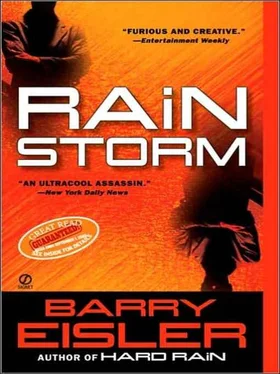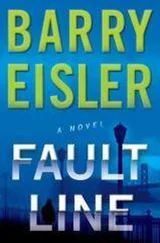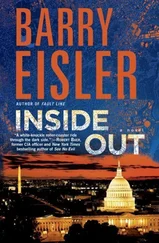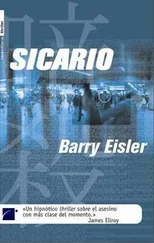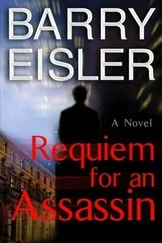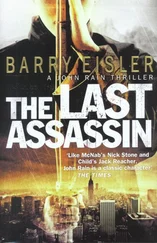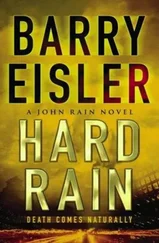To Marc MacYoung, Dianna Gordon, and the rest of the Animal List denizens who hang out at www.nononsenseselfdefense.com, the most eclectic, eccentric bunch of experts on everything anyone could ever imagine. In particular, thanks to Dave Bean, mad scientist and moral philosopher, for sharing his knowledge of firearms and the results of his experiments on what really works and how to do it;Alain Burrese, former army sniper, for helping me understand Dox and refine his tactics; Ed Fanning, for his thoughts on martial arts, self-defense, and the difference between the two; Jack “Spook” Finch, veteran of the Vietnam war’s Easter offensive, Operation Just Cause, Operation Desert Storm, and Silver Star awardee, for sharing his knowledge of firearms and his thoughts on living with the experience of combat and killing; Frank “Pancho” Garza, for his frequent philosophizing on violence, street etiquette, and sheep; Montie Guthrie, Peter Huston, Michael “Mama Duck” Johnson, and Justin Kocher, for sharing their well-founded thoughts on how “heavy hitters” carry themselves; Marc, for his observation that snipers tend to be a soft-spoken breed and for his continued insights into personal safety, violence, and street etiquette; Kevin Menard, Savate Silver Glove, for helping me get up to speed on how Savateurs fight and outfitting Belghazi thereby; Slugg, for sharing his knowledge of firearms, his thoughts on invisibility in crowds, and his cough syrup recipe; Tristan Sutrisno, former army Special Forces, Vietnam veteran, and keeper of the dreaded Nessie, for sharing his thoughts on living with the experience of combat and killing.
To Naomi Andrews and Dan Levin, Eve Bridberg, Alan Eisler, Judy Eisler, Shari Gersten and David Rosenblatt, Joe Konrath, Matthew Powers, Owen Rennert, Ted Schlein, Hank Shiffman, Pete Wenzel, and Jonathan Zimmerman, for helpful comments on the manuscript and many valuable suggestions and insights along the way.
To my friends at Café Borrone in Menlo Park, California, for serving the best breakfasts-and especially coffee-that any writer could ask for.
Most of all, always and forever, to the best of everything, my wife, Laura.
Personal Safety Tips from Assassin John Rain
PART OF THE APPEAL of my series about the half-American, half-Japanese assassin John Rain seems to be Rain’s realistic tactics. It’s true that Rain, like his author, has a black belt in judo and is a veteran of certain government firearms and other defensive tactics courses, but these have relatively little to do with Rain’s continued longevity. Rather, Rain’s ultimate expertise, and the key to his survival, lies in his ability to think like the opposition.
Okay, get out your highlighter, because:
All effective personal protection, all effective security, all true self-defense, is based on the ability and willingness to think like the opposition.
I’m writing this article on my laptop in a crowded coffee shop that I like. There are a number of other people around me similarly engaged. I think to myself, If I wanted to steal a laptop, this would be a pretty good place to do it. You come in, order coffee and a muffin, sit, and wait. Eventually, one of these computer users is going to get up and make a quick trip to the bathroom. He’ll be thinking, “Hey, I’ll only be gone for a minute.” He doesn’t know that a minute is all I need to get up and walk out with his three thousand dollar PowerBook . (Note how criminals are adept at thinking like their victims. You need to treat them with the same respect.)
Okay. I’ve determined where the opposition is planning on carrying out his crime (this coffee shop), and I know how he’s going to do it (snatch and dash). I now have options for security:
avoid the coffee shop entirely (avoid where the crime will occur)
hope to catch the thief in the act, chase him down, engage him with violence
secure my laptop to a chair with a twenty-dollar Kensington security cable (avoid how the crime will occur-it’s hard to unobtrusively employ bolt cutters in a coffee shop, or to carry out a laptop that’s got a chair hanging off it)
Of these three options, #3 makes the most sense for me. The first is too costly-I like this coffee shop and get a lot of work done here. The second is also too costly, and too uncertain. Why fight when you could have avoided the fight in the first place? This is self- defense we’re talking about, remember, self- protection . Not fighting, not melodrama. As for the third, yes, it’s true that these measures won’t render the crime impossible. But what measures ever do? The point is to make the crime difficult enough to carry out that the criminal chooses to pursue his aims elsewhere. Yes, if twenty-seven ninjas have dedicated their lives to stealing your laptop and have managed to track you to the coffee shop, they’ll probably manage to get your laptop while you’re in the bathroom even if you’ve secured it to a chair. But more likely, your opposition will be someone who is as happy stealing your laptop as someone else’s. By making yours the marginally more difficult target, you will encourage him to steal someone else’s.
Which brings us to an unpleasant, but vitally true, point:
If you and your friend are jogging in the woods, and you get chased by a bear, you don’t have to outrun the bear. You just have to outrun your friend.
Except at the level of very high-value executive protection (presidents, high-profile businessmen, ambassadors and other dignitaries), you are not trying to outrun the bear. You are trying only to outrun your friend.
Let’s combine these two concepts-thinking like the opposition, outrunning your friend-with an example from the realm of home security. And let’s add an additional critical element: that all good security is layered .
If you wanted to burglarize a house, what would you look for? And what would you avoid?
Generally speaking, your high-level objectives are to get cash and property, and to get away (home invasion is a separate subject, but is addressed, like all self-protection, by reference to the same principles). You’d start by looking at lots of houses. Remember, you’re not trying to rob a certain address; you just want to rob a house. Which ones are dark? Which are set back from the road and neighbors? Are there any cars in the driveway? Lights and noise in the house? Signs of an alarm system? A barking dog?
Thinking like a burglar, you are now ready to implement the outer layer of your home security. By some combination of installing motion sensor lights, keeping bushes trimmed so as to avoid concealment opportunities, putting up signs advertising an alarm system, buying a dog, keeping a car or cars in the driveway, and leaving on appropriate lights and the television and making sure there are no newspapers in the driveway or mail left on the porch when you’re away, you help the burglar to immediately decide during his “casing” or “surveillance” phase that he should rob someone else’s house.
If the burglar isn’t immediately dissuaded by the outer layer, he receives further discouragement at the next layer in. He takes a closer look, and sees that you have dead bolt locks on all the doors, and that your advertisement was not a bluff-the windows are in fact alarmed. If he takes a crack at the doorjamb, he discovers that it’s reinforced. If he tries breaking a window, he realizes that the glass is shatter resistant. Whoops-time to go somewhere else, somewhere easier.
Okay, the guy is stupid. He keeps trying anyway. Now the second layer of security described above, which failed to deter him, delays him. It’s taking him a long time to get in. He’s making noise. At some point, the time and noise might combine to convince him to abort (back to deterrence). But if he insists on plunging ahead, the noise has alerted you, and you have bought yourself time to implement further inner layers of security: accessing a firearm; calling the police; retreating to a safe room; most of all, preparing yourself mentally and emotionally for danger and possible violence.
Читать дальше
